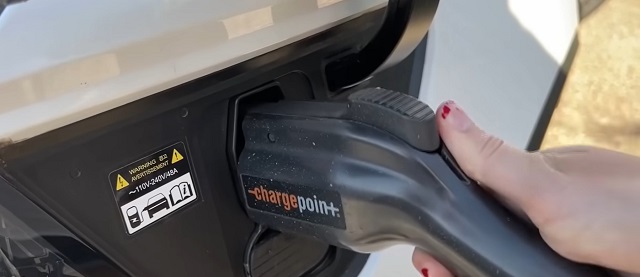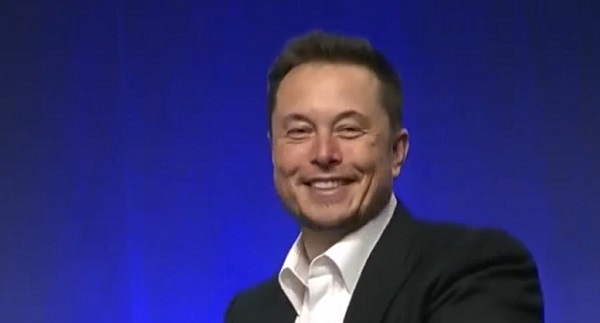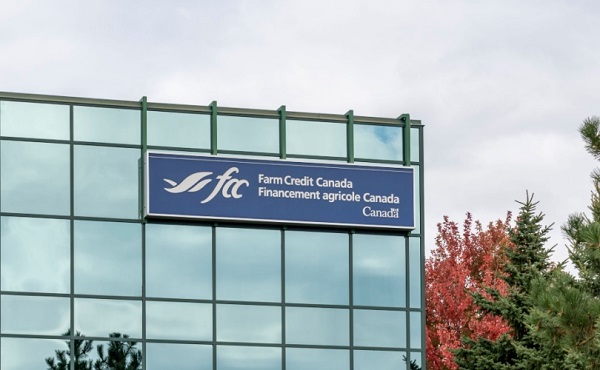Automotive
Automakers Hit Reverse On Idealistic Electric Vehicle Targets Despite Billions In Biden-Harris Subsidies

From the Daily Caller News Foundation
By Owen Klinsky
Automakers have continued to backpedal on electric vehicle (EV) targets over the last year as a slackening of consumer demand has hampered growth despite the billions in subsidies lavished on the industry by the Biden-Harris administration.
A wide array of auto manufacturers have abandoned key EV goals since February, with Volvo, Ford and Mercedes-Benz all dialing back electric quotas or dropping previously planned product lines. The shifts in corporate strategy suggest the EV transition — once touted by auto executives like Ford CEO Jim Farley as the industry’s future — may not be as feasible as once thought due to consumer aversion to lower mileage ranges, a lack of charging infrastructure and higher prices, experts told the Daily Caller News Foundation.
The auto industry’s change in direction is in spite of the billions in subsidies doled out to the industry via the 2021 Bipartisan Infrastructure Bill and the 2022 Inflation Reduction Act, with the White House offering a $7,500 federal tax credit for certain EVs to ease costs for buyers, and allocating $12 billion for carmakers to retrofit factories for EV production. The administration has also put in place stringent regulations designed to phase out internal combustion engine vehicles, including a tailpipe emissions rule that would effectively require about 67% of all light-duty vehicles sold after model year 2032 to be electric vehicles (EVs) or hybrids.
“Even after throwing money at EVs hand over fist, basically paying people tax dollars to drive these cars off the lots, you have a dire spiral of (1) not enough demand to support the number of cars being produced, and (2) the people you paid to buy them now wanting to go back to what they had before,” O.H. Skinner, executive director of the Alliance for Consumers and the former solicitor general of Arizona, told the DCNF.
Autos over the last 5 years:
Auto CEOs: “we’re going electric by 2030 so I can become the toast of the town and get glossy magazine spreads written about how visionary and green I am.”
Engineers: “that’s not possible…”
Accountants: “that’s not possible…”
Customers: “we… https://t.co/ldca2L0n4G
— Alliance For Consumers (@for_consumers) September 4, 2024
Despite the generous tax credits, consumers have been hesitant to adopt EVs at the rate the Biden-Harris administration and automakers have hoped, with EV sales growing 50% in the first half of 2023 and 31% in the first half of 2024, less than the 71% increase in the first half of 2022. Moreover, a June poll from The Associated Press-NORC Center for Public Affairs Research and the University of Chicago’s Energy Policy Institute found 46% of respondents were unlikely or very unlikely to purchase an EV, while just 21% were “very” or “extremely” likely to make the change.
Consumer sentiment towards EVs has struggled even among those who have already purchased the vehicles, with a June survey from leading consulting firm McKinsey and Company finding nearly half of Americans who own an EV want to go back to a standard vehicle.
“The [EV market] headwinds come from physical realities that translate into economic and practical realities,” Mark Mills, a distinguished senior fellow at the Texas Public Policy Foundation and an expert on the automobile market, told the DCNF. “EVs are inherently more expensive… and most consumers are very price sensitive; EV fueling for most people is far less convenient… [and] EV fueling infrastructure is extremely expensive and will take a long time to build out.”
The average cost of a new EV was 10% higher than the price of a standard vehicle as of January, with the 2024 electric version of a base Ford F-150 costing roughly $20,000 more. The Ford F-Series was the best-selling vehicle in the U.S. in 2023.
Ford canceled plans to produce a three-row electric SUV in August and reduced output of its F-150 Lightning pickup truck in January. The reversals follow Ford losing $4.7 billion on EVs in 2023, equating to nearly $65,000 per EV it sold. When reached, a Ford spokeswoman referred back previous comments to the DCNF stating that “we aren’t going to launch vehicles unless they are going to be profitable within 12 months of launch.”
“These are staggering costs to impose on American families,” Diana Furchtgott-Roth, director of the Center for Energy, Climate and Environment at the Heritage Foundation, told the DCNF.
EV carmakers Tesla and Lucid have also struggled in the last year, announcing plans to layoff roughly 10% and 6% of their workforces, respectively.
On top of sheer cost, expanding charging infrastructure has also been a challenge for manufacturers, with the Biden-Harris administration having built just seven EV charging stations in four states as of April 2024, despite the Bipartisan Infrastructure Bill earmarking $7.5 billion for the creation of a national EV charger network. A lack of demand, union requirements, as well as diversity, equity and inclusion initiatives, with the Department of Transportation requiring applicants to promise to perform “intentional outreach to underserved communities” by hosting “neighborhood block parties” in order to qualify for funding, have significantly slowed down the project’s rollout.
Beyond a lack of infrastructure, charging can simply be inconvenient for consumers, with refueling times ranging from 20 minutes to upwards of 50 hours depending on charger voltage and battery size, according to American automotive resource company Edmunds. Even “fast charging” in the urban center of Washington, D.C., can take as long as 35 minutes.
Faced with these obstacles, Volvo Cars abandoned plans to offer an all-electric line-up by the end of the decade, instead aiming to have between 90% and 100% of its cars be fully electric or plug-in hybrids by that time. Mercedes-Benz made a similar announcement back in February, slashing its target of selling 100% EVs by 2030 to just 50% after its net profit fell 21.5% year-over-year in the fourth quarter of 2023.
“The Biden-Harris administration is spending billions in tax incentives to pay auto companies to make EVs, and billions for tax credits to pay households to buy the cars,” Furchtgott-Roth told the DCNF. “Still, Americans are too smart to fall for a product that is not suited for them.”
The White House, Volvo and Mercedes-Benz did not respond to a request for comment from the DCNF.
Automotive
The high price of green virtue

By Jerome Gessaroli for Inside Policy
Reducing transportation emissions is a worthy goal, but policy must be guided by evidence, not ideology.
In the next few years, the average new vehicle in British Columbia could reach $80,000, not because of inflation, but largely because of provincial and federal climate policy. By forcing zero-emission-vehicle (ZEV) targets faster than the market can afford, both governments risk turning climate ambition into an affordability crisis.
EVs are part of the solution, but mandates that outpace market acceptance risk creating real-world challenges, ranging from cold-weather travel to sparse rural charging to the cost and inconvenience for drivers without home charging. As Victoria and Ottawa review their ZEV policies, the goal is to match ambition with evidence.
Introduced in 2019, BC’s mandate was meant to accelerate electrification and cut emissions from light-duty vehicles. In 2023, however, it became far more stringent, setting the most aggressive ZEV targets in North America. What began as a plan to boost ZEV adoption has now become policy orthodoxy. By 2030, automakers must ensure that 90 per cent of new light-duty vehicles sold in BC are zero-emission, regardless of what consumers want or can afford. The evidence suggests this approach is out of step with market realities.
The province isn’t alone in pursuing EV mandates, but its pace is unmatched. British Columbia, Quebec, and the federal government are the only ones in Canada with such rules. BC’s targets rise much faster than California’s, the jurisdiction that usually sets the bar on green-vehicle policy, though all have the same goal of making every new vehicle zero-emission by 2035.
According to Canadian Black Book, 2025 model EVs are about $17,800 more expensive than gas-powered vehicles. However, ever since Ottawa and BC removed EV purchase incentives, sales have fallen and have not yet recovered. Actual demand in BC sits near 16 per cent of new vehicle sales, well below the 26 per cent mandate for 2026. To close that gap, automakers may have to pay steep penalties or cut back on gas-vehicle sales to meet government goals.
The mandate also allows domestic automakers to meet their targets by purchasing credits from companies, such as Tesla, which hold surplus credits, transferring millions of dollars out of the country simply to comply with provincial rules. But even that workaround is not sustainable. As both federal and provincial mandates tighten, credit supplies will shrink and costs will rise, leaving automakers more likely to limit gas-vehicle sales.
It may be climate policy in intent, but in reality, it acts like a luxury tax on mobility. Higher new-vehicle prices are pushing consumers toward used cars, inflating second-hand prices, and keeping older, higher-emitting vehicles on the road longer. Lower-income and rural households are hit hardest, a perverse outcome for a policy meant to reduce emissions.
Infrastructure is another obstacle. Charging-station expansion and grid upgrades remain far behind what is needed to support mass electrification. Estimates suggest powering BC’s future EV fleet alone could require the electricity output of almost two additional Site C dams by 2040. In rural and northern regions, where distances are long and winters are harsh, drivers are understandably reluctant to switch. Beyond infrastructure, changing market and policy conditions now pose additional risks to Canada’s EV goals.
Major automakers have delayed or cancelled new EV models and battery-plant investments. The United States has scaled back or reversed federal and state EV targets and reoriented subsidies toward domestic manufacturing. These shifts are likely to slow EV model availability and investment across North America, pushing both British Columbia and Ottawa to reconsider how realistic their own targets are in more challenging market conditions.
Meanwhile, many Canadians are feeling the strain of record living costs. Recent polling by Abacus Data and Ipsos shows that most Canadians view rising living costs as the country’s most pressing challenge, with many saying the situation is worsening. In that climate, pressing ahead with aggressive mandates despite affordability concerns appears driven more by green ideology than by evidence. Consumers are not rejecting EVs. They are rejecting unrealistic timelines and unaffordable expectations.
Reducing transportation emissions is a worthy goal, but policy must be guided by evidence, not ideology. When targets become detached from real-world conditions, ideology replaces judgment. Pushing too hard risks backlash that can undo the very progress we are trying to achieve.
Neither British Columbia nor the federal government needs to abandon its clean-transportation objectives, but both need to adjust them. That means setting targets that match realistic adoption rates, as EVs become more affordable and capable, and allowing more flexible compliance based on emissions reductions rather than vehicle type. In simple terms, the goal should be cutting emissions, not forcing people to buy a specific type of car. These steps would align ambition with reality and ensure that environmental progress strengthens, rather than undermines, public trust.
With both Ottawa and Victoria reviewing their EV mandates, their next moves will show whether Canadian climate policy is driven by evidence or by ideology. Adjusting targets to reflect real-world affordability and adoption rates would signal pragmatism and strengthen public trust in the country’s clean-energy transition.
Jerome Gessaroli is a senior fellow at the Macdonald-Laurier Institute and leads the Sound Economic Policy Project at the BC Institute of British Columbia
Automotive
Elon Musk Poised To Become World’s First Trillionaire After Shareholder Vote


From the Daily Caller News Foundation
At Tesla’s Austin headquarters, investors backed Musk’s 12-step plan that ties his potential trillion-dollar payout to a series of aggressive financial and operational milestones, including raising the company’s valuation from roughly $1.4 trillion to $8.5 trillion and selling one million humanoid robots within a decade. Musk hailed the outcome as a turning point for Tesla’s future.
“What we’re about to embark upon is not merely a new chapter of the future of Tesla but a whole new book,” Musk said, as The New York Times reported.
Dear Readers:
As a nonprofit, we are dependent on the generosity of our readers.
Please consider making a small donation of any amount here.
Thank you!
The decision cements investor confidence in Musk’s “moonshot” management style and reinforces the belief that Tesla’s success depends heavily on its founder and his leadership.
Tesla Annual meeting starting now
https://t.co/j1KHf3k6ch— Elon Musk (@elonmusk) November 6, 2025
“Those who claim the plan is ‘too large’ ignore the scale of ambition that has historically defined Tesla’s trajectory,” the Florida State Board of Administration said in a securities filing describing why it voted for Mr. Musk’s pay plan. “A company that went from near bankruptcy to global leadership in E.V.s and clean energy under similar frameworks has earned the right to use incentive models that reward moonshot performance.”
Investors like Ark Invest CEO Cathie Wood defended Tesla’s decision, saying the plan aligns shareholder rewards with company performance.
“I do not understand why investors are voting against Elon’s pay package when they and their clients would benefit enormously if he and his incredible team meet such high goals,” Wood wrote on X.
Norway’s sovereign wealth fund, Norges Bank Investment Management — one of Tesla’s largest shareholders — broke ranks, however, and voted against the pay plan, saying that the package was excessive.
“While we appreciate the significant value created under Mr. Musk’s visionary role, we are concerned about the total size of the award, dilution, and lack of mitigation of key person risk,” the firm said.
The vote comes months after Musk wrapped up his short-lived government role under President Donald Trump. In February, Musk and his Department of Government Efficiency (DOGE) team sparked a firestorm when they announced plans to eliminate the U.S. Agency for International Development, drawing backlash from Democrats and prompting protests targeting Musk and his companies, including Tesla.
Back in May, Musk announced that his “scheduled time” leading DOGE had ended.
-

 Alberta2 days ago
Alberta2 days agoNational Crisis Approaching Due To The Carney Government’s Centrally Planned Green Economy
-

 Carbon Tax1 day ago
Carbon Tax1 day agoCarney fails to undo Trudeau’s devastating energy policies
-

 Agriculture2 days ago
Agriculture2 days agoFederal cabinet calls for Canadian bank used primarily by white farmers to be more diverse
-

 Business1 day ago
Business1 day agoThe UN Pushing Carbon Taxes, Punishing Prosperity, And Promoting Poverty
-

 Health1 day ago
Health1 day agoNEW STUDY: Infant Vaccine “Intensity” Strongly Predicts Autism Rates Worldwide
-

 Business1 day ago
Business1 day agoClimate Climbdown: Sacrificing the Canadian Economy for Net-Zero Goals Others Are Abandoning
-

 Great Reset2 days ago
Great Reset2 days agoCanadian government forcing doctors to promote euthanasia to patients: report
-

 Health16 hours ago
Health16 hours agoCDC’s Autism Reversal: Inside the Collapse of a 25‑Year Public Health Narrative



